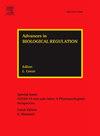去甲肾上腺素介导胰腺导管腺癌中肾上腺素能受体转录和致癌基因表达
IF 2.4
Q1 Biochemistry, Genetics and Molecular Biology
引用次数: 0
摘要
在体外环境中,肾上腺素能刺激β2受体可增加胰腺导管腺癌(PDAC)的增殖和迁移;然而,α1受体在这些肾上腺素能信号通路中的作用尚不清楚。先前的研究表明,MAPK信号通路响应β-肾上腺素能信号而上调,但突变体KRAS的其他信号通路和下游靶点尚未被研究。本研究探讨了肾上腺素能信号通过α1和β-受体在两种人源性PDAC细胞系中的作用,检测了去甲肾上腺素(NE)处理后以及β和α -受体拮抗剂存在下的增殖、伤口愈合和蛋白表达。RT-qPCR检测肾上腺素能受体和KRAS下游效应蛋白的表达。我们发现NE对不同PDAC细胞系的增殖和伤口愈合有不同的影响。此外,肾上腺素能受体的表达在两种细胞系中均受α1信号的负反馈控制。此外,NE降低MMP9的表达,同时也影响VIM、CCND1、mTOR和rhoA的表达。我们证明了肾上腺素能刺激对PDAC下游分子信号通路的基因型依赖性作用,这对致癌性很重要。基于我们的发现,PDAC细胞信号通路的基因型表征可能有助于进一步研究PDAC的有效治疗方法。本文章由计算机程序翻译,如有差异,请以英文原文为准。
Norepinephrine mediates adrenergic receptor transcription and oncogenic gene expression in pancreatic ductal adenocarcinoma
Adrenergic stimulation of β2 receptors has shown to increase pancreatic ductal adenocarcinoma (PDAC) proliferation and migration in an in vitro setting; however, the role of α1 receptors in these adrenergic signaling pathways is unclear. Previous research has suggested that the MAPK signaling pathway is upregulated in response to β-adrenergic signaling, but other signaling pathways and downstream targets of mutant KRAS have yet to be investigated. This study investigates the role of adrenergic signaling through α1 and β-receptors in two human-derived PDAC cell lines, examining proliferation, wound healing, and protein expression after treatment with norepinephrine (NE) and in the presence of β and α1-receptor antagonism. Using RT-qPCR, the expression of adrenergic receptors and downstream KRAS effector proteins was evaluated. We found that NE has varying effects on proliferation and wound healing in different PDAC cell lines. Moreover, adrenergic receptor expression is under negative feedback control through α1 signaling in both cell lines. Furthermore, NE decreases expression of MMP9 while also affecting expression of VIM, CCND1, mTOR, and rhoA. We demonstrate genotype dependent effects of adrenergic stimulation on downstream molecular signaling pathways in PDAC that are important for oncogenicity. Based on our findings, genotypic characterization of cell signaling pathways in PDAC may aid further research in effective therapeutics for PDAC.
求助全文
通过发布文献求助,成功后即可免费获取论文全文。
去求助
来源期刊

Advances in biological regulation
Biochemistry, Genetics and Molecular Biology-Molecular Medicine
CiteScore
8.90
自引率
0.00%
发文量
41
审稿时长
17 days
 求助内容:
求助内容: 应助结果提醒方式:
应助结果提醒方式:


